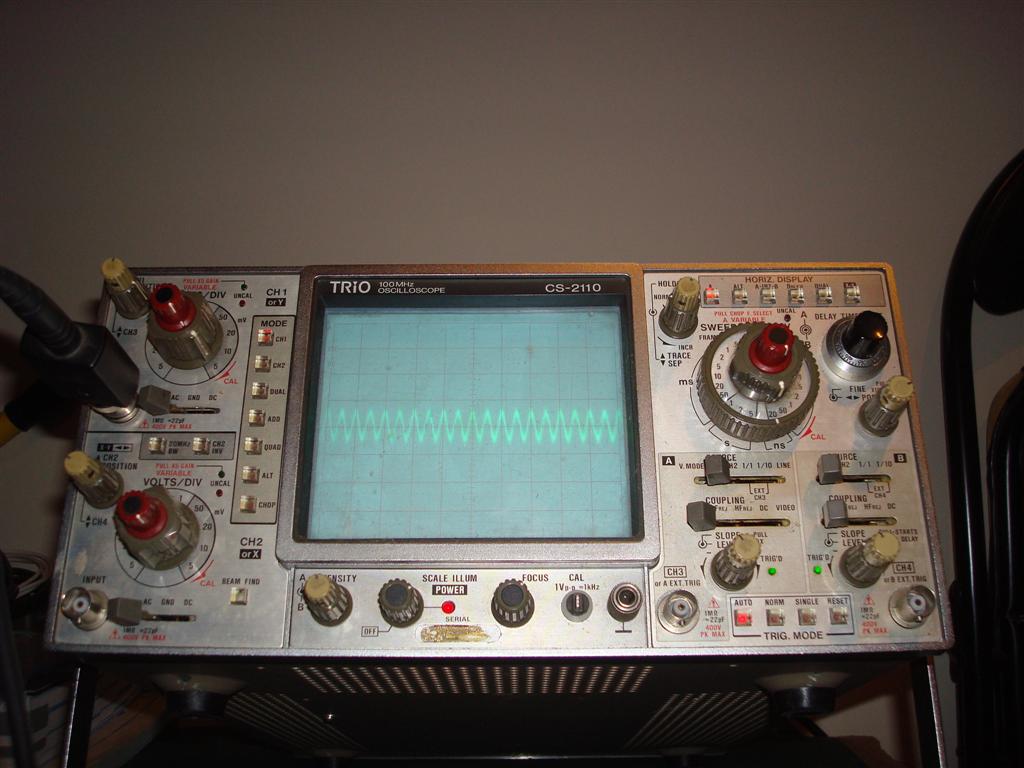Hi Guys,
So I borrowed a 100Mhz scope and decided to try and visually see the effects on voltage of bad caps. I got myself a old Piii mobo with some leaking caps, although the computer itself never blue screened.
This brings me to my first question: Will bad caps menifest themselves by excessive ripple current?
And my second question : If so should I measure ripple current with the scope on AC?
My method so far was to hook up the scope to a cap near the CPU. I have got the V/div setting on 5mV and the time/div on 20ns. I am using 10:1 probes.
As a result my trace is peak to peak about 1.5 div, so I calculate :
5mV = 0.005V = 1.5div * 0.005v = 0.0075v but now factor in the 10:1 probes gives 0.075v.
The actual volts coming out of the Cap is 1.63 and 0.075/1.63 is 4%. So I am not sure if this is the correct terminology (or hell even if my methods are correct) but I estimate 4% ripple current.

Now would I go to the Intel Piii spec sheet to see if this is within limits for that processor?
-Al
So I borrowed a 100Mhz scope and decided to try and visually see the effects on voltage of bad caps. I got myself a old Piii mobo with some leaking caps, although the computer itself never blue screened.
This brings me to my first question: Will bad caps menifest themselves by excessive ripple current?
And my second question : If so should I measure ripple current with the scope on AC?
My method so far was to hook up the scope to a cap near the CPU. I have got the V/div setting on 5mV and the time/div on 20ns. I am using 10:1 probes.
As a result my trace is peak to peak about 1.5 div, so I calculate :
5mV = 0.005V = 1.5div * 0.005v = 0.0075v but now factor in the 10:1 probes gives 0.075v.
The actual volts coming out of the Cap is 1.63 and 0.075/1.63 is 4%. So I am not sure if this is the correct terminology (or hell even if my methods are correct) but I estimate 4% ripple current.
Now would I go to the Intel Piii spec sheet to see if this is within limits for that processor?
-Al
Comment